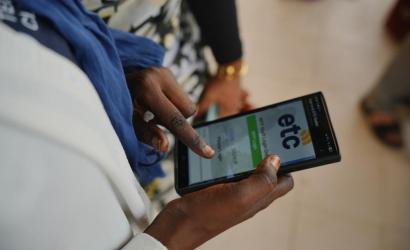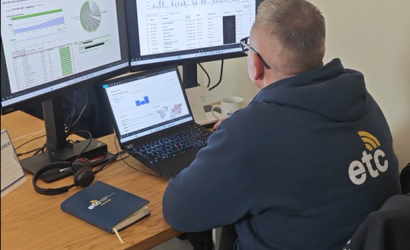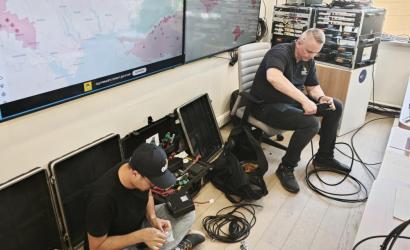Ukraine
After months of rising tensions between Ukraine and the Russian Federation (RF), there has been a significant escalation in armed hostilities in Ukraine as of 24 February 2022. Intense conflict is ongoing across major cities, including the capital Kyiv, Kharkiv, Kherson and Odessa, as well as in the oblasts of Donetska and Luhanska. The Government of Ukraine has declared a State of Emergency.
The ETC was activated in Ukraine on 3 March and has deployed a coordinator to Krakow, Poland, where telecommunications equipment is being pre-positioned for the response. Additionally, the ETC is coordinating with its local and global partners to identify mechanisms to relay life-saving information to the affected population and bridge the information gap between humanitarians and affected communities.
An ICT profile on Ukraine can be accessed below.
ICT Profile
The State Emergency Service
Ministry of Infrastructure
National Commission for State Regulation of Electronic Communications, Radio Spectrum and Postal Services (NCCIR) - established in 2022
43.3 million
Telecommunications is one of the most diverse and fast-growing sectors in the economy of Ukraine. The telecommunications and internet sector rank high in European and global rankings.
The industry also leads in demonopolization of Ukraine's economy as Ukrtelekom (once the country's sole telephone provider) was successfully privatized, and is now losing its retail market share to independent, foreign-invested private providers.
All three Mobile Network Operators (MNOs)—Lifecell, Kyivstar, and Vodafone Ukraine—joined together in 2021 in an infrastructure sharing agreement to accelerate the deployment of LTE networks into rural areas. All three MNOs are expanding their LTE networks using newly available 900MHz spectrum.
In the non-government controlled areas of Ukraine, the mainland mobile networks are affected. Only regional mobile carriers Phoenix and Lugacom and mainland operator Vodafone are currently operational in these areas, while Lifecell and Kyivstar are not available. It should be noted that Vodafone cannot maintain their sites in these areas due to a lack of accessibility, so quality cannot be guaranteed. Phoenix and Lugacom have stable voice and data networks and are interconnectable.
The entire population of Ukraine has a telephone and/or mobile phone connection. Internet access is universally available in cities and main transport corridors, expanding into smaller settlements.
Ukraine's telecommunications development plan emphasizes further improving domestic trunk lines, international connections, and the mobile cellular system.
Ukrainian hryvnia (UAH)
4.5 (medium)
380
.ua
Type C & F. Voltage: 220V 50Hz; Plug: Two Pin (round)
Yes - led by UNDP
Ukraine’s geographic location combined with 17 FTAs with 46 countries (including EU, EFTA, Canada, Israel, etc.) makes it an important transit corridor for trade and travel between Europe, Asia and the Middle East.
The transport infrastructure sector is one of Ukraine’s most important sectors of economy, with extensive railway and highway networks, sea and river ports (terminals), airports (over 20), and a wide network of air destinations, freight and customs terminals. The transport sector significantly contributes to Ukrainian economy – it accounts for 6.4% of the country’s GDP and 7% of total employment.
Although the country has a broad transport infrastructure, it needs to be modernized, extended, and the quality of services improved through gradual alignment with the European standards.
8
Source: WorldBank 2020
129
Source: WorldBank 2020
18.6
Source: WorldBank 2020
99
Source: GSMA Mobile Connectivity Index
66.9 (medium)
Source: GSMA Mobile Connectivity Index
90
Source: GSMA Mobile Connectivity Index
This describes some of the regulations and rules related to emergency telecommunications in Ukraine.
The regulatory framework for the Ukrainian telecom market is mainly established by Telecom Law, which outlines the rights,
obligations and liabilities of the telecoms market players and authorities of NCCIR. This Law determines legal and organizational basis of state policy in spheres of electronic communications and radio-frequency range, and also right, obligation and responsibility of physical persons and legal entities which participate in the related activity or use electronic communication services.
The Air Code is the main piece of Law regulating activities in the aviation sphere. The regulatory authorities for UAS operations in Ukraine are as follows:
1) State Aviation Service of Ukraine – the main government body in the sphere of aviation and use of airspace of Ukraine.
2) Ukrainian State Air Traffic Service Enterprise, the exclusive state-owned provider of air navigation services in Ukraine.
3) National Bureau of Air Accidents Investigation of Ukraine, also known by its abbreviated name 'NBAAI' – the national civil aviation incident investigation authority of Ukraine, a "specialist expert organization" consisting of 40 experts and subordinate to CMU.
Ukrainian law contains numerous grey areas in respect of specific issues of using UAS. Where the Law does not provide for rules created for UAS exclusively, general aviation regulations are applicable to UAS operations.
Tampere Convention - Ukraine not a signatory
The Tampere Convention on the Provision of Telecommunication Resources for Disaster Mitigation and Relief Operations came into force 8 January 2005, following the ratification by 30 countries. The Tampere Convention calls on States to facilitate the provision of prompt telecommunication assistance to mitigate the impact of a disaster, and covers both the installation and operation of reliable, flexible telecommunication services. Regulatory barriers that impede the use of telecommunication resources for disasters are waived. These barriers include the licensing requirements to use allocated frequencies, restrictions on the import of telecommunication equipment, as well as limitations on the movement of humanitarian teams.




